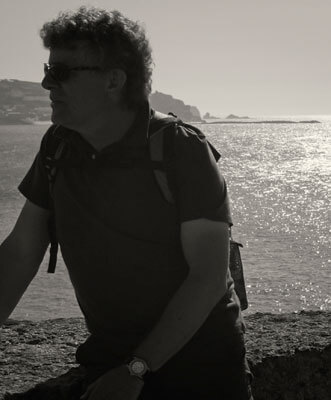I'm a photographer and designer (graphics and exhibitions) living in upstate New York, with a passion for photographing landscapes, interiors, and people. The pared down features in many of these photographs reflect my interest in natural history, and in the passage of time and the remnants of the past in the present. While the photographs were taken in places as diverse as the lakes and beaches in Maine, gardens in England, and the rural hills of central New York state, all of the images reveal my preference for the simplicity and a certain joyfulness that can exist with austerity. Is there a story behind each of these images? Always.
Ted Anderson is presented by TBM Photography Network
TBM Photography Network regularly presents the popular series: "Photographer Spotlight.” In this part of their newsletter and FaceBook page various fellow photographers are interviewed to learn more about what motivates them, what their goals are and what direction they wish to take with their art. In this segment they welcome the talents of photographer Ted Anderson.
TBMPN: What best describes your particular style of photography?
TA:I am drawn to austerity, simplicity and to capturing beauty in places that might seem lonely to some. I think a lot about the relationship between people and their environments, and sometimes I look for a figure or a remnant of the past in my exterior or interior photographs. I do not put elements together artificially, but try to present images as I find them. Sometimes I allow stories to arise from the moments captured with the camera.
TBMPN: What equipment do you regularly use?
TA:My main camera of choice is a Nikon D90 with an 18-100mm lens and a 50-200mm lens. When shooting landscapes, I often go with the wide angle settings. I use a small variety of filters that include neutral density and polarizing filters. Any processing is done on a Mac computer, and I work primarily in Photoshop’s Camera Raw and in Silver Efex.
TBMPN: Who or what do you consider your major influences?
TA:There are many photographers and painters whose work I admire, but right now I’d have to say that the photographs of Brett and Edward Westen, Julia Margaret Cameron and Walker Evans come to mind. I also love the paintings of Andrew Wyeth and Edward Hopper. Visually I am also inspired through music and words that include songs by Bill Callahan, novels by Marilynne Robinson, and the poems by W.S. Merwin.
TBMPN: Why did you choose photography as your method of expression?
TA:As a kid I loved to draw, and I’ve also composed songs on the guitar for years. Photography, however, is what brings to me the greatest level of creative satisfaction and that sense of connection to others. Just about anyone can take a photograph, but to create an image that might move another person emotionally or intellectually is a challenge that I enjoy.
TBMPN: What do you wish to accomplish with your photography?
TA:I wish to continue expressing myself both artistically and emotionally and to keep creating images with which people can connect. I recently heard from an old friend, someone I haven’t seen in years, who had requested a print that she’d seen online. That sort of thing does not happen every day, and when it does, it’s quite wonderful.
TBMPN: What are your current projects?
TA:This past year I have been photographing more portraits, and I’m in the process of setting up a few more portrait sessions. I will be having a solo exhibition in 2016 at the Fenimore Art Museum in Cooperstown, New York. This exhibition will include landscape and interior images from New York State as well as portraits. In the meantime I am always thinking about new locations to explore.
TBMPN: What are your plans for future projects?
TA:I’d like to see my photography business expand a bit over the next couple of years. I would like also to take on more portrait and interior photography projects. This next July (2014) I will be in England for two weeks and will have an opportunity for some informal wedding shots in the countryside. I’ll also have the chance to do some street photography in London. I can’t wait!
